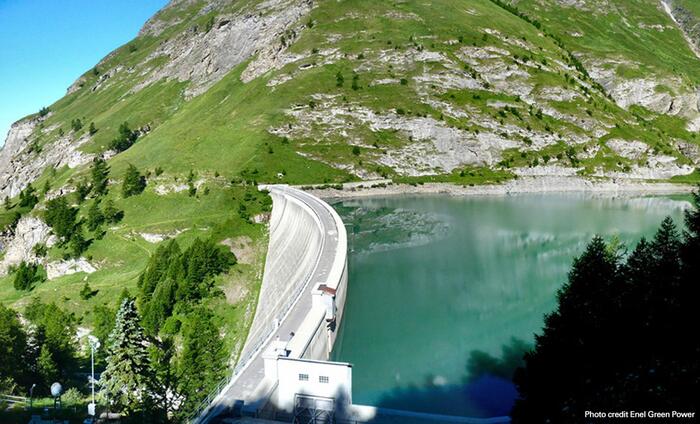Enlarge image
1/11
For a long time, electrically powered personal aerial drones for short distances in the city were more of a fantasy.
Now more and more financially strong financial investors are getting into start-ups who want to build electrically powered vertical aircraft ("electric vertical take-off and landing", or "eVTOL" for short) in series.
How much money is currently flowing into the young industry, shows a report in the "Financial Times" from August 24th, 21: In this year alone, eVTOL start-ups have already received 4.3 billion dollars from donors, as figures from the management consultancy McKinsey show - in the form of venture capital or capital commitments for Spac IPOs.
This is currently one of the "hottest markets", writes the FT - even if most start-ups have not even finished prototypes that can actually carry passengers.
Photo: Lilium
Enlarge image
2/11
More than 200 companies around the world are working on such high-flyers, with two young German companies well ahead of them:
The start-up
Lilium
from the Bavarian town of Oberpfaffenhofen wants to build a network of "Vertiports" around the globe for its air taxis by 2025, i.e. take-off and landing points for the fully electric vertical passenger jets. To achieve this, Lilium is preparing to go public; the merger with the US shell company Qell has already taken place. The start-up has its first major order: an order for around 220 electric jets from the Brazilian airline Azul.
The seven-seater electric jets, which take off vertically, are to be built in series in Germany.
The
Lilium Jet
(in the picture the first prototype from 2018) is supposed to connect cities with one another "environmentally friendly, fast and affordable".
The prototype completed its first test flight in October 2019.
Photo: Daniel Karmann / dpa
Enlarge image
3/11
Volocopter
is also at the forefront
.
The Baden-based company develops electrically powered multicopters for passenger transport and drones for inner-city freight transport.
Your Volocity air
taxi
is to be lifted into the air by 18 individual
engines
and has already received the manufacturer's license from the European flight safety agency EASA.
The
Volocity
aircraft
should reach a speed of 100 kilometers
per
hour and a maximum altitude of almost 2000 meters.
It can stay in the air for an hour.
Photo: Volocopter
Enlarge image
4/11
As of March 2021,
Volocopter had
raised a total of 322 million euros in capital.
The money is to flow primarily into the further steps for the approval of the Volocity.
The company plans air taxi services in major cities around the world.
Volocopter is also investigating an IPO via the Spac shell.
Experts reckon that Volocopter will need a total of 700 million euros in order to be able to build and commercialize its aircraft in series.
In the picture, CEO
Alexander Zosel
on his manned first flight in the spring of 2016.
Photo: Nikolay Kazakov / Nikolay Kazakov for Volocopter
Enlarge image
5/11
The US company
Joby Aviation
, which acquired the former Uber eVTOL division "Elevate" a few months ago,
is considered to be the financially strongest flight taxi start-up
.
Tech investor
Marcus Pincus
and Linkedin founder
Reid Hoffmann
also launched Joby on the stock exchange in February 2021 with the help of a Spac shell.
The transaction increased its valuation to a whopping $ 6.6 billion.
Although Joby Aviation counts the auto giant Toyota among its financiers, Joby raised less capital than originally expected when it went public.
This is also a sign of how high-risk the bet on Joby Aviations and its competitors is for investors: All start-ups have yet to show more than prototypes and lofty plans.
According to the company, Joby's aircraft (pictured) has already carried out more than 1,000 test flights and is expected to fly over distances of up to 150 kilometers.
Photo: Bradley Wentzel / Joby Aviation
Enlarge image
6/11
Joby's US competitor
Archer Aircraft
(in the picture the Archer prototype with the beautiful name "Maker") is
also listed on the stock exchange - and that via Spac's flash IPO
.
In early February 2021, the IPO took place with a total company valuation of 3.8 billion dollars.
The company also announced a $ 1 billion order from United Airlines.
However, this is conditional on the US aviation authorities approving the electrically powered Archer aircraft for regular operation.
The "Maker" should be able to fly almost 100 kilometers and reach a top speed of 240 km / h.
At the end of July, however, Archer had to cut its pro forma valuation by $ 1 billion from its previous $ 2.7 billion - another sign that the investor enthusiasm that could be seen in the first quarter of 2021 is slowly waning.
Photo: Archer Aircraft
7/11
Also,
Airbus
is working on new electric concepts for aviation.
The
Cityairbus
is to become the air taxi for city traffic.
Airbus also follows the concept of vertical take-off and landing.
The multicopter took off on its maiden flight in May 2019.
The eight propellers powered by electric motors should be particularly quiet and the cruising speed should be up to 120 km / h.
On fixed routes, it should be able to fly remotely and carry four passengers.
Photo: Airbus
Enlarge image
8/11
Competitor
Boeing
sent the prototype of its autonomous passenger aircraft
Boeing PAV
(short for "passenger air vehicle") on its maiden flight
in January 2019
.
The future of the project is now questionable after Boeing closed its Boeing NeXt innovation area in September 2020 as a result of the Corona crisis and the problems with the 737 Max.
Photo: Boeing
9/11
The
HY4
hydrogen
aircraft is to serve as a means of transport for short distances.
The four-seat passenger aircraft is equipped with hydrogen fuel cells and an electric drive to support take-off and climb flights.
Photo: DLR
Enlarge image
10/11
In September 2016, the
HY4 took off
from Stuttgart Airport on its official maiden flight.
It should reach a speed of 145 kilometers per hour and fly up to 1500 kilometers.
The aircraft is the result of a cooperation between the German Aerospace Center (DLR) and several companies.
Photo: DLR
Enlarge image
11/11
Google founder
Larry Page is also involved
in the air taxi business.
With the German
Sebastian Thrun
as CEO, he founded the company
Kitty Hawk
.
In search of an aircraft for everyday use, the Californian start-up has built the "Flyer" (photo), the first electrically powered vertical aircraft that can be flown by non-pilots.
In March 2020 the company ended the project in order to concentrate on the further development of the "Heaviside" aircraft - also a single aircraft.
Photo: HANDOUT / AFP
wed / cr



/cloudfront-eu-central-1.images.arcpublishing.com/prisa/CY3MBVCW4BE4ZPFNI4WI4AQ6IE.jpg)




